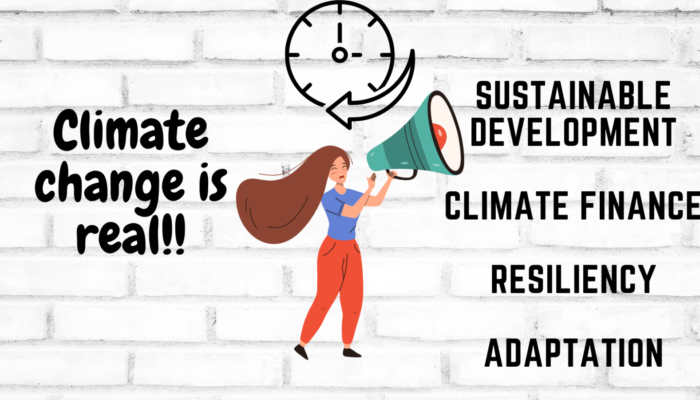
In 1971 a group of environmental activists set sail from Canada to protest nuclear testing. With this journey the organization Greenpeace was born. 50 years old this year, Greenpeace and other organizations like it have seen environmental concerns move from the fringe to the mainstream, and eventually evolve into climate change activism. In 2009, at the United Nations Climate Change Conference in Copenhagen, more than forty thousand people marched for a Global Agreement on Climate Change. Spontaneous rallies and demonstrations demanding immediate climate action took place around the globe, increasing over the last decades. Beginning in 2018 ‘Fridays For Future’ are days where millions of school students boycott schools on Friday and participate in climate change activism. Civil disobedience movements like Extinction Rebellion and Ende Gelände have also started to gain significant attention and support. On September 23, 2019, world leaders in New York city witnessed possibly the most powerful speech in the last decade when Greta Thunberg declared that they have failed to address climate change.
The rise of “Generation Greta”
For the first time in history, millions of students across the globe are taking part in the climate change movement on a regular basis. The scale and the diversity of this activism are unprecedented; something the world has never seen before. In few years, many of these student activists will reach voting age, making it less likely political leaders can simply ignore them. Climate change has yet to become the primary issue in an electoral campaign in the majority of countries but as ‘Generation Greta’ come of age this is likely to change more than ever before.
One unique aspect of the current climate change movement is to address climate change in a holistic way; not focusing solely on the habitat of charismatic but remote animals like polar bears, but advocating for specific political initiatives that affect everyone, like cutting emissions, securing greenhouse gas sinks and climate justice. This is also one of the reasons that the movement is so widespread.
The fact that climate change is going to hit Generation Z hardest is the fuel for this movement; making it continue to grow more intense with time.
The future of climate activism
Until now the popular youth-led movement has primarily focused on peaceful demonstration and civil disobedience activities. School strikes and a series of communications campaigns are key strategies that activists are using to make sure climate change stays in the mainstream discussion. Other groups of activists, like Extinction Rebellion are pursuing more extreme forms of protest, where civil disobedience becomes breaking the law and getting arrested in large numbers to put pressure on individual governments so that their leaders take the climate change threat seriously, in acts that may be familiar to some of the earliest environmental activists in the 1970s.
This new generation climate change movement is still in its nascent stage; but has been very successful in bringing climate awareness to more people than ever before, debunking the climate skeptics and advocating for a climate-resilient future. These activists are addressing the physical risk of climate change and the social justice part equally – and which is great, but activists will also need to focus on the economic transformation path. Governments still resist change by raising questions regarding climate finance and sustainable developmental pathways, so for all climate activists, these ideas should be part of the next phase.
Although most people are sympathetic to climate activists (perhaps excepting climate change deniers or fossil fuel lobbyists) there are also many fears that any transformation, even a critically necessary one, might lead to economic disruption and the loss of jobs. In order to help these people embrace the climate activism movement, an understanding of these fears, and ideas to address them in climate solutions is essential.
In the future, decentralization of the movement will also be necessary. Many young people are already leading their own movements for change and one day soon there will be one Greta Thunberg, Vanessa Nakate or Xiuhtezcatl Martinez in every block of every country. Every region, every community has a different risk of climate change in terms of societal, economic and environmental impact; and we need representatives pointing out those issues for every region on the planet.
Trending is great but..
Climate activism is already popular on social media and youth demonstrations are often found to be trending worldwide. This is actually a good sign that these voices are reaching many people. But we need to ask ourselves: is the message reaching the true vulnerable population in a region? Are we able to reach the farmers, fisherfolk, daily wagers who have unreliable incomes and the urban poor? In the future, the climate activist needs to make sure they are speaking with all sections of society, especially with the most climate vulnerable fraction of the community.
Climate change is a global issue but it requires building local resilience. Advocacy for mitigation by cutting emissions is great; but the next generation of climate activism will also need to focus on the adaptation part, especially in climate-vulnerable countries in the Global South. In my work with multiple climate activist groups in South Asia, I have seen their focus begin to shift from creating awareness to implementing region-specific action plans. They are protesting against the building of new coal power-plants and at the same time, they are initiating dialogue with local governmental agencies to develop area-specific climate change action plans.
Speaking truth to governments, that they are not doing enough has become a mainstream form of climate activism today. Being vocal about local issues and incorporating the voices and economic fears of everyday people into the governmental decision-making system will be the path for tomorrow.



